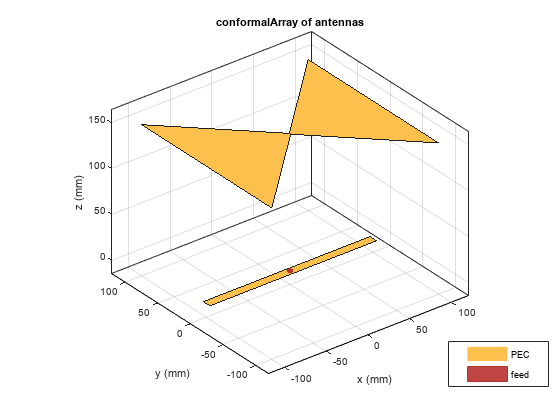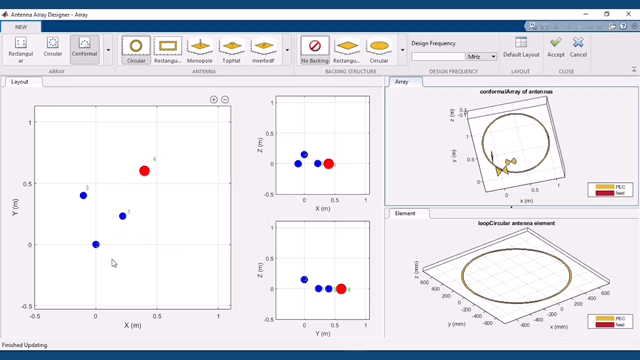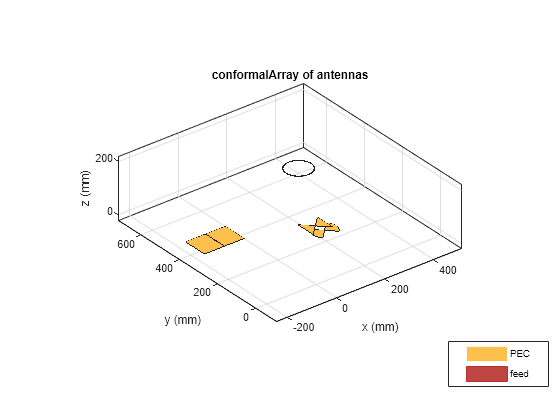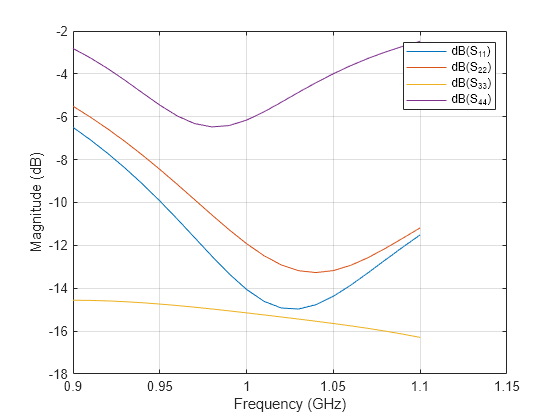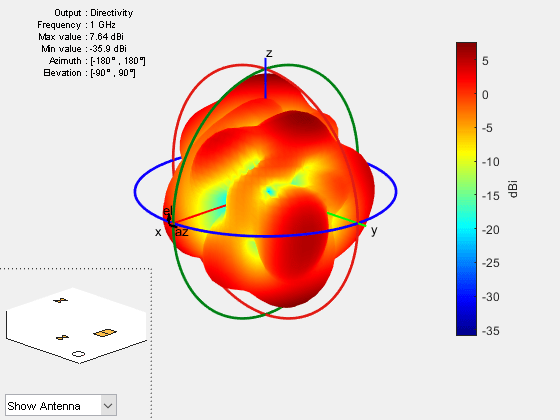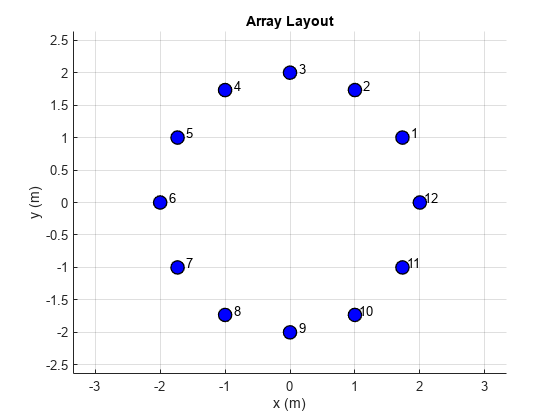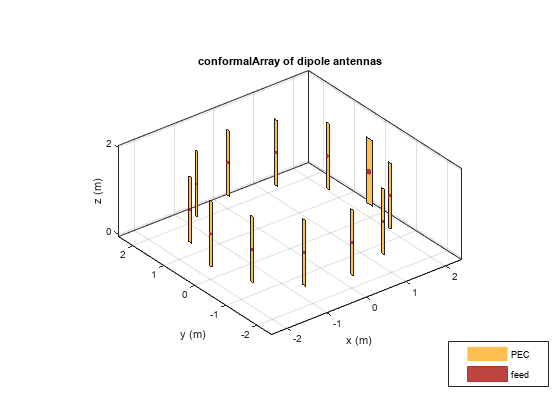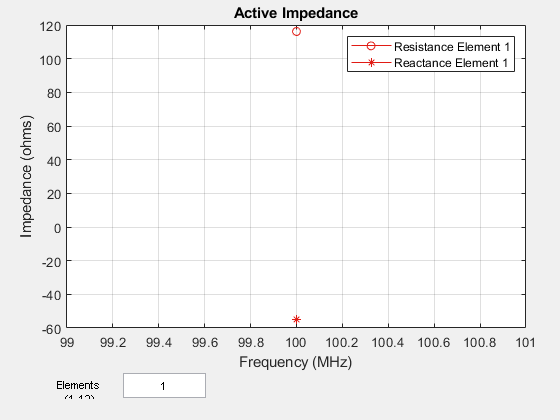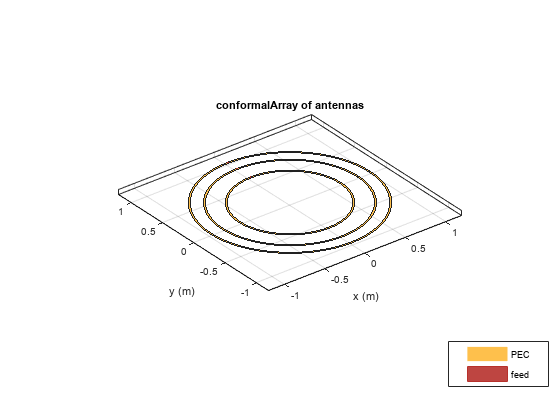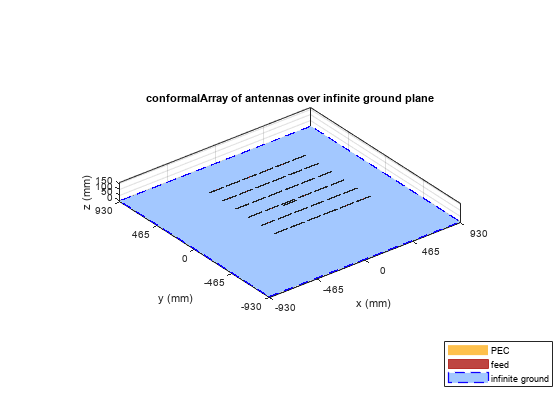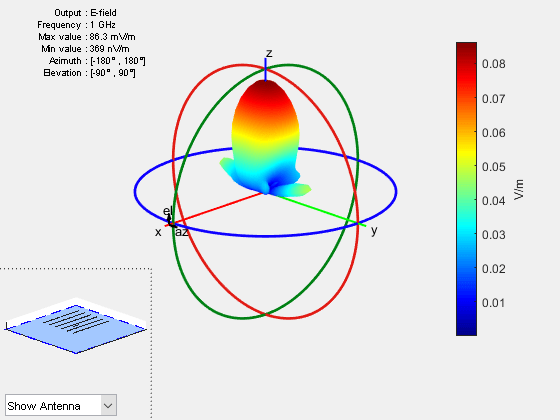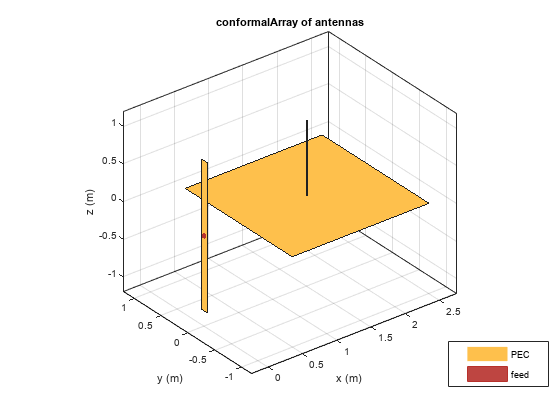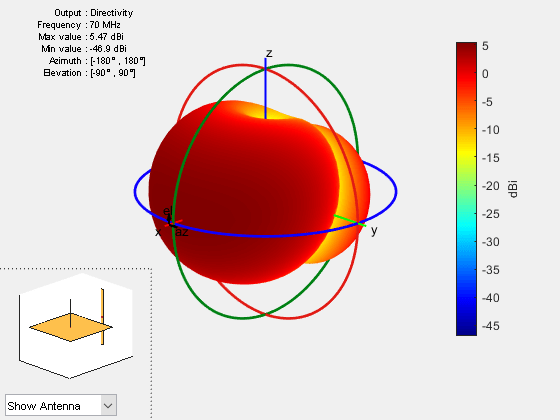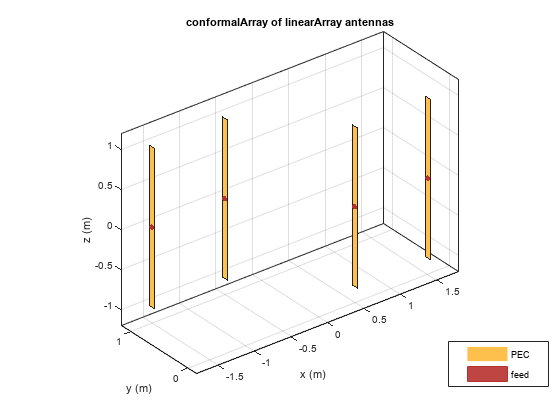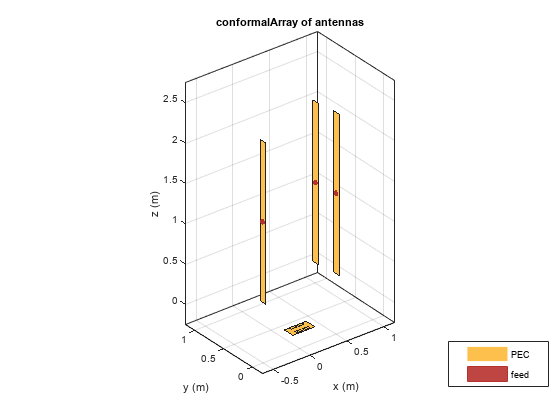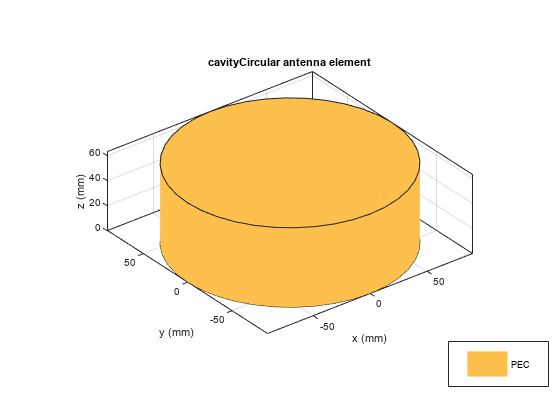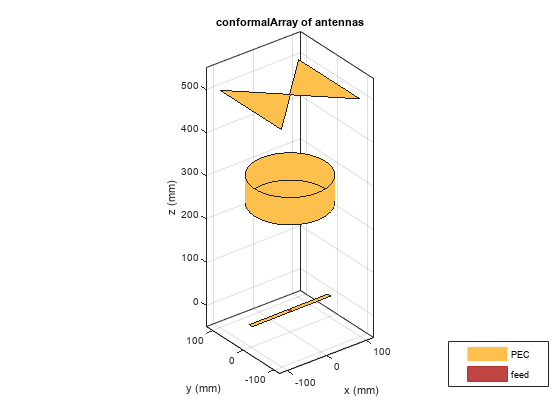conformalArray
Create conformal array
Description
The conformalArray object creates a conformal array of the
specified antenna, array, or shape. You can also specify an array of any arbitrary
geometry, such as a circular array, a nonplanar array, an array with nonuniform
geometry, or a conformal array of arrays.
Conformal arrays are used in:
Direction-finding systems that use circular arrays or stacked circular arrays.
Aircraft systems due to surface irregularities or mechanical stress.

Creation
Description
c = conformalArraydipole
object resonating around 700 MHz and a center-fed
bowtieTriangular object resonating around 403 MHz when
isolated. The antennas are spaced 0.15m apart from each other along the
positive z-axis.
c = conformalArray(PropertyName=Value)PropertyName is the
property name and Value is the corresponding value. You
can specify several name-value arguments in any order as
PropertyName1=Value1,...,PropertyNameN=ValueN.
Properties that you do not specify, retain default values.
For example, c = conformalArray(Element={dipole
monopole},ElementPosition=[0,0,0.1; 0,0,0.2]) creates a
conformal array of a dipole and a monopole antenna whose feeds are at a
distance of 0.1 m and 0.2 m from the origin along the positive
z-axis.
Properties
Object Functions
arrayFactor | Array factor in dB |
axialRatio | Calculate and plot axial ratio of antenna or array |
beamwidth | Beamwidth of antenna |
charge | Charge distribution on antenna or array surface |
correlation | Correlation coefficient between two antennas in array |
current | Current distribution on antenna or array surface |
design | Create antenna, array, or AI-based antenna resonating at specified frequency |
doa | Direction of arrival of signal |
efficiency | Calculate and plot radiation efficiency of antenna or array |
EHfields | Electric and magnetic fields of antennas or embedded electric and magnetic fields of antenna element in arrays |
feedCurrent | Calculate current at feed for antenna or array |
impedance | Calculate and plot input impedance of antenna or scan impedance of array |
info | Display information about antenna, array, or platform |
layout | Display array or PCB stack layout |
memoryEstimate | Estimate memory required to solve antenna or array mesh |
mesh | Generate and view mesh for antennas, arrays, and custom shapes |
meshconfig | Change meshing mode of antenna, array, custom antenna, custom array, or custom geometry |
msiwrite | Write antenna or array analysis data to MSI planet file |
optimize | Optimize antenna and array catalog elements using SADEA or TR-SADEA algorithm |
pattern | Plot radiation pattern of antenna, array, or embedded element of array |
patternAzimuth | Azimuth plane radiation pattern of antenna or array |
patternElevation | Elevation plane radiation pattern of antenna or array |
patternMultiply | Radiation pattern of array using pattern multiplication |
peakRadiation | Calculate and mark maximum radiation points of antenna or array on radiation pattern |
phaseShift | Calculate phase shift values for arrays or multi-feed PCB stack |
rcs | Calculate and plot monostatic and bistatic radar cross section (RCS) of platform, antenna, or array |
returnLoss | Calculate and plot return loss of antenna or scan return loss of array |
show | Display antenna, array structures, shapes, or platform |
sparameters | Calculate S-parameters for antenna or array |
stlwrite | Write mesh information to STL file |
vswr | Calculate and plot voltage standing wave ratio (VSWR) of antenna or array element |
Examples
More About
References
[1] Balanis, Constantine A. Antenna Theory: Analysis and Design. 3rd Ed. New York: John Wiley and Sons, 2005.
